(Ginza, Tokyo)
The results are in. You will be surprised to learn that Japan’s real estate price -at least some spots are- is breaking the record set during the bubble period.
On July 2, 2018, the National Taxation Bureau announced the average value of a square meter of land for tax assessment as of January 1 2018.The nationwide average price went up by 0.7% from the previous year and it increased for three consecutive years. By prefecture, growth is high in the three major metropolitan areas such as Tokyo (up 4.0%), Osaka (up 1.4%), Kyoto (up 2.2%), Aichi (up 1.5%)The rate of growth is higher in all three major metropolitan areas than the previous year.The rate of growth in core local prefectures is rather high such as Hokkaido (up 1.1%), Miyagi (up 37%), Hiroshima (up 1.5%), Fukuoka (up 2.6%).Average price in Okinawa was up 5.0% and it is the highest rate of increase in Japan.
Here are some key facts.
Tokyo
In Tokyo metropolitan, the average price went up 4.0%, the five consecutive years.
Ginza Chuo-dori has broken its record high for the second year in a row.The top appreciation in Tokyo was 15.8% at Aoyama Street, Minato-ku, Aoyama 3, which is also an upscale residential area. A number of luxury brand flagship stores are located in the area.In terms of growth rate, Aoyama regained the top place for the first time since 2007.The second spot is Adachi-ku Senju 3’s Kita-Senju Station West Exit Square and it went up by 14.5%.In addition to the revitalization of the area due to the effect of a few universities campus being relocated, the convenience to the center of Tokyo boosted it.
These are the some major and the most expensive spots in Tokyo 23 wards.
(price per square meter ‘000 yen and the growth rate)
Ginza 5-chome Ginza Chuo street 44320 +9.9% (the most expensive lot in Japan)
Shinjuku-ku Shinjuku 3-chome Shinjuku-dori 27600 +12.7%
Chiyoda-ku Yurakucho 2-chome Harumiya 25120 +9.0%
Udagawa-cho Shibuya station side street 24000 +11.1%
Chuo-ku Yaesu 1-chome Exterior street 18480 +5.0%
Minato-ku Kita Aoyama 3 chome Aoyama street 13520 +15.8%
Minato-ku Shimbashi 2-chome Shimbashi Nishiguchi Station square street 12400 +9.2%
Toshima-ku Higashi-Ikebukuro 1-chome Green Avenue 10040 +11.8%
Taito-ku Ueno 4-chome Chuo street 7660 +8.2%
Chiyoda-ku Kanda 4-chome Central Chuo 7590 7100 6.9
Shinagawa-ku, Kamirosaki 2-chome Meguro Station East Exit Rotary 4120 +7.6%
Meguro-ku Jiyugaoka 1-chome Jiyugaoka Station square street 3760 +10.3%
Nakano-ku Nakano 5-chome Nakano station North entrance station square before 3340 +9.2%
Adachi-ku Senju 3-chome Kita-Senju Station west exit square square street 2840 +14.5%
Setagaya-ku Tamagawa 2 chome Tamagawa street 2570 13.2%
Taito-ku Asakusa 1 chome Kaminari gate street 2230 +12.6%
Ogikubo Suginami-ku, Kochi 1-chome Oume road 2200 +8.9%
Setagaya-ku Kitazawa 2-chome Shimokitazawa station south exit 2180 +9.5%
Suginami-ku Koenji-Kita 3-chome Koenji Station North Exit Shopping Street Avenue 1660 +8.5%
Arakawa Arakawa-ku Nishi-Nippori 2-chome Nippori Station East Exit Plaza 1660 +9.9%
Kanagawa
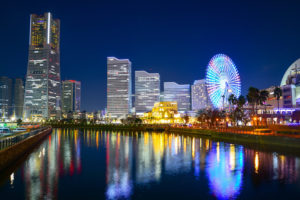
(Yokohama, Kanagawa)
In Kanagawa prefecture, the average appreciation growth was 0.6%. The price increased for five consecutive year.
The most expensive spot in the prefecture was Yokohama City Nishi ku Nishi Ku 1 Yokohama Station West Exit Bus Terminal in front (Yokohama Takashimaya front), Price per square meter was 10.24 million yen, up 13.3% from the previous year.
With 15 tax offices out of 18 tax offices in Kanagawa prefecture, price of the upscale spots rose from the previous year.
Of the highest prices within each tax office, these are the hot spots;
Yokohama City 2 Tsuruya-machi 2 Takeshima Town 107 Line = Tsuruya Bridge north side (up 14.9%) , Kawasaki City Kawasaki City Kawasaki Station East Exit Square Street (up 14.9%)
Yokohama-shi Nishi-ku Nishi-ku 1 Yokohama Station West Exit Bus Terminal (up 13.3%).
These lots showed more than 10% growth.
Saitama
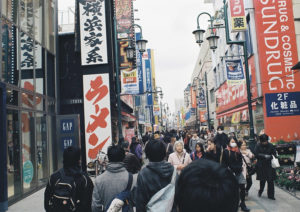
(Kawagoe, Saitama)
In Saitama prefecture, market price rose an average 0.7% over the last year.
The price rose for five consecutive years.It is a form that the rise became more noticeable. Omiya station West exit station is the highest in the prefecture for 27 consecutive years, the rate of increase is also No. 1. proximity of transportation is good, and supply and demand of office is tight.Omiya station around the west entrance has little office vacancy (Saitama city)The survey target area in total 15 tax offices.The highest line price by tax office rose to 8 points, the same as the previous year at 6 points, which is flat. Only Chichibu ares went down.Apart from Saitama, five surrounding prefectures such as Ibaraki, Tochigi and Gunma saw the decline of the price.Among the highest line prices by tax office within Saitama prefecture, the highest rate of rise was 10.4% of the “Omiya station West exit station front Rotary” in the Omiya Ward, Saitama City.The rise rate further expanded from the previous year (8.3%).Price was 3.3 million yen per square meter, the highest in the prefecture for 27 consecutive years.“Urawa station West exit station front Rotary” of Urawa Ward, Saitama City, which has constructed condominiums in the vicinity, also increased by 7.0%. Kawaguchi City’s scheduled redevelopment “station front industrial road” also went up by 5.9%.The trend of land price increase in the suburbs of Tokyo continues. In Kawagoe-shi, the number of people who want to borrow stores etc. by the increase of inbound (foreign visitors to Japan) has increased, rents are rising.
Bottom line
Despite the shrinking population and ageing issue, on average, overall land price in Japan is underlying upward trend.
However, the growth is very patchy.
Tokyo and surrounding prefectures are showing very healthy growth but
the pice in country side such as Niigata, Akita, Aomori Kagawa, Tokushimais etc is still on the down turn trend.
The land price in those prefectures have been down for more than two decades.
Average price in Akita prefecture went down by 2.3%.
Inbound tourism is affecting the land price significantly.
Okinawa’s growth was 5% and it is because of the very
steady increase of the number of foreign tourists..
Price in Higashiyama-ku, Kyoto city shot up by 25% from the previous year.
Even within the city center or suburbs of the city, price is becoming patchy.
If you live in the area which is far from the station, you cannot
expect the appreciation in the future.
Convenience and proximity are the key.
In other words, even in the same city, land prices in front of the railway station and the station are high, and the land price falls by gradually moving away from the station.
Location is becoming even more important.
The real estate market depends on the economic cycle and overall economic climate, even if we assume that the land price rise will continue in the future, we will not see the bubble economy or the fund bubble period before the global financial crisis in 2008.
Some real estate officials and analysts say that after the Tokyo Olympic Games and the Paralympic Games, real estate market conditions are entering a correction phase, but I personally forecast that the land price in Tokyo will
continue to pick up for a couple of reasons.
First, affordability is not completely diminished, second, it is still relatively inexpensive compared with other global gate way cities and third, the price benefits from the booming inbound tourism.
Japan’s growth of Inbound tourists topping the world. We need more accommodations.
Finally, in light of the ageing society, when choosing the location of the real estate, we need to cautiously pay close attention to the quality of the public service provided by each municipality.
In the long run, in some municipals, the quality of administrative services will be inevitably undermined because of decrease of the population.
Choosing a right municipal is also a key in the future.
(price of high-end condo in central district in global major cities as of April 2018)
source : Japan real estate institute
Link: Japan real estate institute data
Other Helpful Articles
Good opportunities ? : How does the booming inbound tourism impact the property market ?
(Kyoto)
(Yokohama)
Toshihiko Yamamoto
Real estate investing consultant and author.
Founder of Yamamoto Property Advisory in Tokyo.
International property Investment consultant and licensed
real estate broker (Japan).
He serves the foreign companies and individuals to buy and sell
the real estates in Japan as well as own homes.
He holds a Bachelor’s degree in Economics from
Osaka Prefecture University in Japan
and an MBA from Bond University in Australia
Toshihiko’s book, “The Savvy Foreign Investor’s Guide to Japanese Properties: How to Expertly Buy, Manage and Sell Real Estate in Japan”is now out on Amazon, iBooks (iTunes, Apple) and Google Play.
About the book
Amazon.com Link

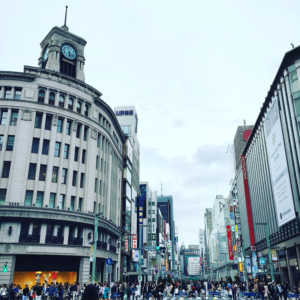
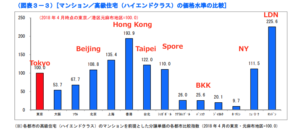
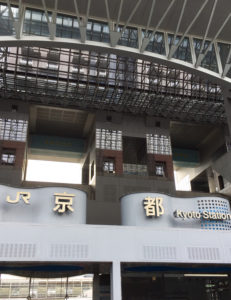
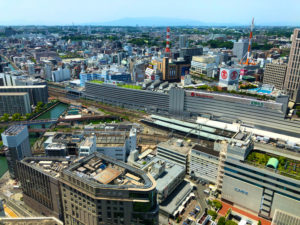
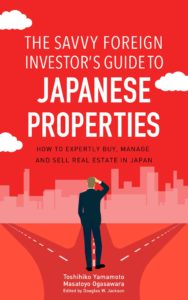
1 comment for “Japan’s real estate price update: Price up for 3 consecutive years. Very strong growth in Tokyo buoyed by the booming inbound tourism”